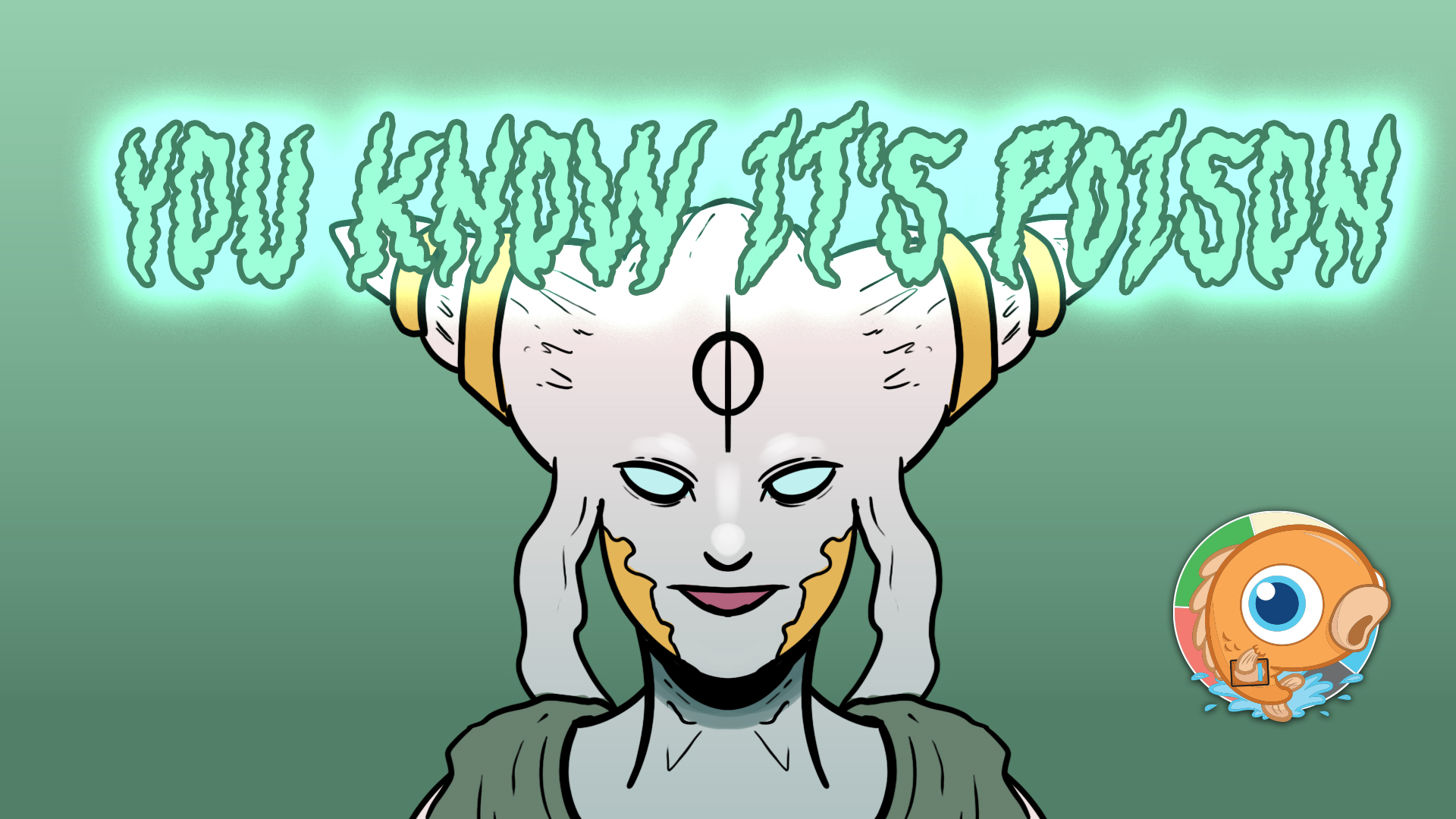Intro to Pauper Finance
Pauper seems well on its way to becoming a real format in the paper world. Not only are there side events at Grands Prix, but they are pulling in hundreds of players, which is enough that Pauper should at the very least continue to see paper support in its current form, and if the format keeps growing, the dream of the Pauper community to eventually have a Pauper Grand Prix doesn't seem all that far-fetched. Even beyond the number of players showing up to play the format, perhaps a bigger sign of Pauper's legitimacy as a paper Magic format is the fact that the prices of Pauper staples are starting to increase, for the first time ever. The mix of successful events and increasing prices means that it's time to take notice of Pauper.
While the future for new-to-paper formats is often murky, with formats like Frontier and Tiny Leaders being mostly hype and having little staying power, the fact that Pauper already has a dedicated fan base from Magic Online events means it has a better-than-average shot at being around for the long haul, not to mention the full-throated support of people like The Professor over at Tolarian Community College, who has a platform large enough to draw new players into the Pauper format. While there's still a chance that Pauper in paper ends up being the next Frontier or Tiny Leaders, the combination of factors that the format has working in its favor makes it seem like Pauper could be different, not just sticking around for the long haul but growing into an even more important format over time.
So today, we are going to jump into Pauper from a finance perspective. We've already seen Pauper staples increasing by hundreds of percent, jumping from literal bulk to $5 or even $10 in a couple of days, and these buyouts are likely to continue happening. As such, we're going to be talking about which Pauper cards you should be pulling from your bulk (or, if you are interested in the format, looking to pick up soon, before prices potentially increase).
Why Pauper Finance Matters
As I mentioned a moment ago, ChannelFireball's announcement that they would be supporting Pauper at their GP's was a huge moment for Pauper in the paper world; a moment that is already having a meaningful impact on the prices of Pauper staples. While we'll talk about individual card in a minute, just take a look at the prices of some popular Pauper decks over the past couple of months since ChannelFireball announced the events.








As you can see, while some decks have increased in price a little and some have increased in price a lot, the general trend line on Pauper as a format is up. Out of the 10 most played decks in the format eight cost more today than they did when the Pauper events were announced, and the exceptions being Mono-Black Control which costs about the same (although this mostly depends on whether or not people choose to play Oubliette, which has spiked significantly since the announcement) and Four-Color Tron (the other top 10 deck not shown is Mono-White Heroic, which only moved into the 10 most played decks in the format a couple of weeks ago, so it doesn't have a long price history).
It's also worth pointing out that most of those price movement has taken place in the last three weeks, which might mean that this is just the start of Pauper finance and that we'll see more price increases over coming weeks. Of course, this depends on the format continuing to see support in the paper world and continuing to grow, which could be debatable. One of the biggest reasons to play Pauper in paper is that it's the cheapest tournament format, but if every deck ends up doubling or tripling in price the reasons to play Pauper over Standard or even Modern start to diminish.
Pauper Finance Basics
Before talking about the individual cards, we need to break down a few of the basics of Pauper finance because the nature of the format (only commons, based on cards that are printed at common on Magic Online rather than in paper) makes Pauper finance unique. So, here are some of the rules of Pauper finance.
- Every single card in Pauper is reprintable. Because the format is all commons, there are no Reserved List concerns, which means Wizards can theoretically reprint any Pauper staple at any time. This means that if you find copies of cards that spiked because of Pauper demand, you're probably better off selling in the not-too-distant future. While it will take Wizards a while to catch up with these new Pauper price spikes, it's very likely that over the next year or two, Wizards will start reprinting the most expensive cards in the Pauper format (assuming the format remains popular), if not in dedicated Pauper products, then in other supplemental products like Commander decks, Masters sets, and Conspiracy.
- Just being a Pauper staple doesn't means a card has financial potential. There are a lot of factors that go into whether or not a card could actually increase in price, and Pauper is naturally resilient to price spikes because all of the cards legal in the format were printed at common, which means the supply is comparatively high. Take, for example, Augur of Bolas. The blue two-drop is currently the single most played creature in Pauper, but it has little finance potential because it's from a relatively recent set (Magic 2013) and has been reprinted multiple times (in Commander 2013 and Modern Masters 2017). So, don't make the mistake of buying cards just because they are heavily played because being heavily played isn't enough to make a common expensive.
- So what are we looking for in Pauper cards that could end up increasing in price and being expensive? Here, there are three things: First, the cards need to be old. The reason for this is pretty simple: the Magic community was huge for more recent sets, which means there are tons of random Modern-era commons on the market, which in turns means it's very hard for demand to outpace supply and cause these cards to increase in price. So far, all of the cards we've seen spike based on Pauper demand are from pre-Modern sets, and this will likely continue to be the trend. Second, the card does need to be heavily played. Just being old isn't good enough; instead, a card needs to be old and also heavily played in a tier Pauper deck. Third, the card needs to have only one printing (or as close to one printing as possible—really weird, old supplemental product printings like the Beatdown Box Set or Deckmasters probably shouldn't count as an actual reprinting). Cards also get bonus points if, like Battle Screech and Chainer's Edict, their only "real" paper printing is at uncommon, which makes them significantly rarer than most other Pauper staples, decreasing supply and upping the odds of a price increase.
- One last thing to keep in mind: Pauper is always changing thanks to supplemental products and Masters sets. It's especially important to keep an eye out for Magic Online-only sets like Vintage Masters and Tempest Remastered, which add new cards to the Pauper formats without actually increasing paper supply, because if something powerful is downgraded to common (as we saw with Chainer's Edict in Vintage Masters), the stage will be set for a quick spike in Paper. Normal Masters sets (which are also printed in paper) aren't likely to cause spikes of cards reprinted in the set (because a ton of new supply is entering the market), but it's still worth looking for cards that synergize with new-to-Pauper cards that haven't been reprinted because these are the cards likely to see a big price increase as a result of a released-in-paper Masters set.
Pauper Staples with Finance Potential
It's time to start looking at individual cards, and here's the plan: using the lists of the 50 most played creatures, spells and lands in the Pauper format, we'll be looking for cards that meet the criteria we just discussed: old, one printing, and heavily played. These are the cards that have either already spiked (which means you'll want to dig through your bulk to see if you have some copies to sell or trade away at the new higher price point) or have reasonably good odds of spiking in the future (which means you might want to pick up your copies soon if you plan on building a Pauper collection, or you will risk paying more in the future).
(Note: the number you see in the heading is where the card falls on the most played list, so for example, #7: Quirion Ranger means that Quirion Ranger is currently the seventh most played creature in the Pauper format).
Creatures
#7: Quirion Ranger
While Quirion Ranger isn't a slam dunk from a finance perspective—mostly because it's already close to $2.50 a copy, making it more expensive than most Pauper staples—it does check most of our boxes, being from Visions (a very old set) and with only a very old FNM promo to go along with the original printing. At the very least, it's worth digging through your bulk to find copies, and it wouldn't be surprising to see the one-drop continue to rise. Elves are an extremely popular tribe, and I expect a reasonable number of players will choose the deck as one of their first builds in the Pauper format.
#10: Gorilla Shaman
The Mox Monkey has already spiked from $0.25 to over $4.00 over the last month or so, which means it's too late to pick up cheap copies. While we don't really know what the ceiling is for really old Pauper staples in the paper world, it's important to remember that we're still talking about commons, which makes it seem like outside of extreme situations (like staples from Legends, for example), hitting $20 or $50 like Modern or Standard all-stars is likely out of the question. Still, it's certainly worth digging through your cards to see if you have some copies sitting around to cash out into the spike.
#12: Birchlore Rangers
Birchlore Rangers is a good test case for how new is too new for a card to experience a price spike. The one-drop is a staple of the popular Elves deck, seeing almost as much play as Quirion Ranger, and it only has a single printing, which means it hits most of the marks for a Pauper card that could spike. On the other hand, Onslaught is the very last block of the pre-Modern era, which means supply is meaningfully higher than Visions, Alliances, and the other sets we've been discussing so far. Does this means there are simply too many copies of Birchlore Rangers on the market for the price to increase? We'll have to wait and see. If we start seeing cards from this era increase, it might be worth keeping an eye on early Modern era cards as well (for example, Chittering Rats, which is #17 on the creature list and comes from Mirrodin block, the very next block after Onslaught).
#30: Standard Bearer
Standard Bearer is interesting. It's one of the cards that's spiked the most so far, jumping all the way up to near $10 (from $0.50) before falling back down to $4. More interesting than the spike itself is that Standard Bearer isn't that old (Apocalypse was near the end of the pre-Modern era) and isn't that heavily played (coming in 30th on the most played creature list). If it can jump from $0.50 to $4.00, this means that any of the cards ahead of it should have the potential to do the same. I can't imagine that the number of Standard Bearers is that much different from the number of Birchlore Rangers or Chittering Rats, which were printed just a handful of years later.
#33: Tireless Tribe
Tireless Tribe might be one of the best penny stock pickups for Pauper. While it only sees play in one deck, the combo deck (using Inside Out) that turns Tireless Tribe into a one-shot lethal attacker) is sort of the Splinter Twin of the Pauper format, and while it probably won't be the first deck most new paper Pauper players build, it seems like a great second or third deck for when you want something different than the typical control / aggro / tempo decks that are popular in the format. While the fact that Tireless Tribe is limited to one deck does hurt its potential to some extent, it's also an irreplaceable part of that deck, so if someone decides to build Inside Out combo, they will need a playset of Tireless Tribe. At $0.22 a copy, it seems like an extremely low-risk card to pluck from your bulk or add to your collection, just in case.
Spells
#8: Gush
Not much to say about Gush. Even though it has a printing in a Duel Deck, it's already spiked from $2 to over $6. It probably can't go too much higher, even though it's a true staple of the Pauper format. Dig through your bulk, sell of any copies you can find into the hype, and be on the looking for Duel Deck: Jace vs. Chandra printings as well!
#15: Chainer's Edict
Chainer's Edict is already over $5, so it probably doesn't have much more room to grow, but it's worth mentioning because it's one of the unique Pauper staples that isn't actually a common in the Paper world. While Chainer's Edict is an uncommon from Torment, it was also printed at common in Vintage Masters (a Magic Online-only release), which makes it legal in paper Pauper as well. It will be interesting to see what happens over the long haul with paper Pauper. Will they stick with the Magic Online card pool, or will they change to a paper-based card pool?
The upside of sticking with the Magic Online card pool is that it's familiar to current Pauper players, who have played the format for years on Magic Online, which is where the Pauper format was born. On the other hand, for new Pauper players (some of whom probably don't know much about Magic Online, a problem which will grow if Magic Arena becomes the new-player digital product of choice), having random uncommons legal because of some digital game they know and care nothing about is weird. Regardless, $5 a copy for an old uncommon is still a pretty good deal if you have copies sitting around.
#22: Fireblast
I almost didn't include Fireblast on our list because it has one major factor working against it: it has a bunch of supplemental product printings, including not only Duel Deck: Jace vs. Chandra but also Premium Deck: Fire and Lightning. This means the supply is high compared to most Pauper cards. On the other hand, it has one huge factor working in its favor: Fireblast is also a Legacy staple burn spell, and Burn is a great, budget-friendly starter deck for the Legacy format. Basically, while Fireblast has more supply than the typical Pauper staple, it also has somewhat more demand thanks to Legacy, which might even things out and give the free four-damage burn spell some finance potential, even though there are several printings on the market today.
#25: Skred
Skred is another weird one. Technically, it breaks our "it must be pre-Modern" rule, but Coldsnap is a unique (and notoriously low-supply) set, which might mean we shouldn't consider it the same way we consider other Modern sets. Furthermore, Skred, like Fireblast, gets additional demand from a non-Pauper format—in this case, Modern, where it's not just played but has a deck named after it (Skred Red). The downside of Skred is that playing it is expensive because you not only need Skred itself but a mana base full of snow-covered basic lands. Considering that Snow-Covered Mountain by itself is $2.50 per copy, you're looking at spending at least $50 on basic lands to play a Skred deck in Pauper, which might push some players away from the card, limiting its financial relevance. If we are including Coldsnap cards on our list, it's also worth mentioning that Martyr of Ashes comes in at #34 on the most played creature list (primarily as a sideboard card for Burn decks) and could be worth keeping in mind as well.
#50: Circular Logic
Circular Logic is similar to Chainer's Edict, an old uncommon legal in the Pauper format thanks to a rarity downshift in Vintage Masters. As a result, it's up to $5, even thought it's the very bottom card on our list of the 50 most played spells in the format. Apparently, just being an uncommon that's legal in Pauper (and even slightly played) is enough for the finance world to take notice, so here's the complete list of cards that are legal in the Pauper format thanks to their rarity being downshifted in Vintage Masters:
- Afterlife, Battle Screech, Gilded Light, Mistmoon Griffin, Soltari Emissary, Circular Logic, Killer Whale, Addle, Chainer's Edict, Dauthi Mercenary, Predatory Nightstalker, Skirge Familiar, Tyrant's Choice, Beetleback Chief, Goblin Commando, Goblin General, Skirk Drill Sergeant, Arrogant Wurm, Brindle Shoat, Claws of Wirewood, Elephant Guide, Elvish Aberration, Tangle, Tribute to the Wild, Mana Prism.
Of this list, look out for Battle Screech, Goblin General, Predatory Nightstalker, and Tangle (along with Circular Logic and Chainer's Edict, which we already talked about). All of these cards are already worth a few dollars, mostly because they are fairly scarce in the paper world thanks to being printed at uncommon in older, low-supply sets. As for the rest of the list, most of the cards don't see play, although if someone manages to break Mistmoon Griffin or find a sweet shadow deck that ends up winning tournaments, all of these cards have some amount of finance potential based on scarcity alone.
Lands
While most of the Pauper staple lands have issues from a financial perspective, either already being somewhat expensive from other formats or having multiple reprintings, here are some of the most important non-basic land cycles from Pauper. While there might not be potential for huge spikes, it's probably worth pulling these cards from your bulk just in case.
Ash Barrens
Ash Barrens is probably the poster card for Pauper spikes, jumping all the way up to $8. On one hand, this makes sense because its only printing is in a Commander deck, and the cycling land is an ultra-staple in Pauper, where reasonable mana fixing is at a premium. On the other hand, it's unlikely the card can go much higher and could easily be reprinted in anything from a Masters set to another supplemental product, so if you have extra copies sitting around, it's probably best to sell into the hype.
Tron



Tron is one of the most played decks in the Pauper format, which makes Urza's Tower, Urza's Power Plant, and Urza's Mine come in 10th through 12th on the list of most played lands in the format. While the price of this cycle is driven more by Modern than Pauper and you've probably been pulling Tron lands from your bulk already, it's worth keeping in mind that the cycle is very important to Pauper as well, and if the Pauper format does ever develop into a legitimate GP format, it would increase demand for Tron lands. Whether or not this demand would matter much from a financial perspective, considering the demand is already high from Modern, is a good question, but regardless, it's worth being aware of the cycle's importance to the format.
Artifact Lands



The artifact lands are scattered throughout the list of the 50 most played lands in the format, mostly because of Affinity, where they are archetype staples. Great Furnace is the most important of the bunch because along with Affinity, it shows up in Kuldotha Boros to support cards like Galvanic Blast.
Other Cards to Look Out For




While starting with the 50 most played cards of each type makes sense, we've seen cards from outside the most played lists spiking as well. For example, Tortured Existence is an archetype staple but for a fringe archetype. With this in mind, here are some other cards that fit most of our criteria (although here, we will stretch a bit and include some Modern-era cards) but fall just a bit outside of the most played lists. While they might not have quite as much potential as more heavily played cards, they are still worth plucking from your bulk and possibly even buying because they do see play in the format. To keep things organized, let's look at these dark horse selections on a deck-by-deck basis.
- Elves: Moment's Peace.
- Tron: Capsize
- Burn: Needle Drop
- Stompy: Viridian Longbow
- Mono-Black: Choking Sands
- Kuldotha Boros: Battle Screech
- Mono-White Heroic: Cho-Manno's Blessing
- WB Pestilence: Prismatic Strands, Grim Harvest
- Dimir Control: Unearth, Evincar's Justice
- Bogles: Ancestral Mask
- Inside Out Combo: Shadow Rift
- Mono-U Delver: Whirlpool Rider
- Tortured Existence: Tortured Existence, Spore Frog
- Familiars: Sunscape Familiar, Moment's Peace
- Mono-Black Land Destruction: Icequake, Rancid Earth, Choking Sands
- Enchantress: Protective Sphere
- Turbo Fog: Tangle
- Goblins: Mogg Conscript, Mogg Raider, Sparksmith
Again, considering the limitations of these cards (being outside of the most played lists and often being part of fringe decks), you probably shouldn't rush out and buy everything from this list, but if you are going to do digging through your bulk, you might as well pull these out and set them aside, since there's a non-zero chance that they have some sort of financial relevance at some point in the future thanks to the Pauper format.
Conclusion
Anyway, that's all for today. Have you picked up Pauper in paper? How has your experience been so far? Does the format have legs in the paper world? Have you been buying cards for the Pauper format? If so, what cards or decks have you purchased so far? Let me know in the comments! As always, leave your thoughts, ideas, opinions, and suggestions, and you can reach me on Twitter @SaffronOlive or at SaffronOlive@MTGGoldfish.com.













